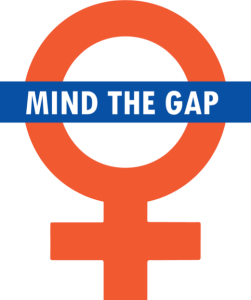 Last week I applied for a policy and campaigning job – that I knew I would never get at this point in my career – which required me to set out my vision on what needs to change in Europe in order to advance women’s right and gender equality. While I obviously did not get shortlisted for the job, I am happy that it made me clarify my position on the issue. This is what I wrote:
Last week I applied for a policy and campaigning job – that I knew I would never get at this point in my career – which required me to set out my vision on what needs to change in Europe in order to advance women’s right and gender equality. While I obviously did not get shortlisted for the job, I am happy that it made me clarify my position on the issue. This is what I wrote:
My vision on what needs to change in Europe to advance women’s rights and gender equality is based on changes in three areas, being:
1. education;
2. legislation; and
3. policy
1. Education
The basis for any significant change to happen in society lies within education. At present basic education (primary, secondary or higher education) does, in most EU countries, not include any meaningful reference to gender or feminism which means that children are not aware of gendered power relations, male privilege or the history of women’s suppression unless they have access to sources outside of formal education or a particular eagerness to learn. Therefore, there are still many adults who are unaware of the problems that exist as a consequence of centuries of unequal power balance between men and women (gender stereotypes, wage gap, violence against women etc.) and are resistant to acknowledging and combating discrimination against women in modern day society. Part of the solution would be to make gender studies a compulsory part of the curriculum in either of the stages of formal education and to make a meaningful reference to feminism a compulsory theme in history classes.
2. Legislation
Article 8 of the Treaty on the Functioning of the European Union spells out that the EU “(i)n all its activities […] shall aim to eliminate inequalities, and to promote equality, between men and women”. The EU should have stronger legislation (in the form of directives) dedicated to women’s rights – and not only in the area of direct discrimination. The Victim’s Directive, for example, in many ways is very gender neutral in wording and in practice not very helpful to women victims of violence, especially in comparison with the Council of Europe’s Istanbul Convention. There should be an EU accession to the Istanbul Convention and, in addition, a specific gender-sensitive directive aimed at women victims of violence which requires thorough national implementation. Furthermore, after the scrapping of the maternity leave proposal, a new proposal should finally be drafted and adopted to ensure that all women in the EU have access to equal rights.
3. Policy
For its gender equality policy (and legislation) to be effective, the EU should back its commitment to gender equality with adequate funding. Both within the EU institutions themselves (for example the European Institute for Gender Equality) as for external women’s rights organisations in the EU-28 there should be an increased budget to tackle discrimination against women and protect gender equality.
What do you think needs to change in Europe to reach gender equality?
